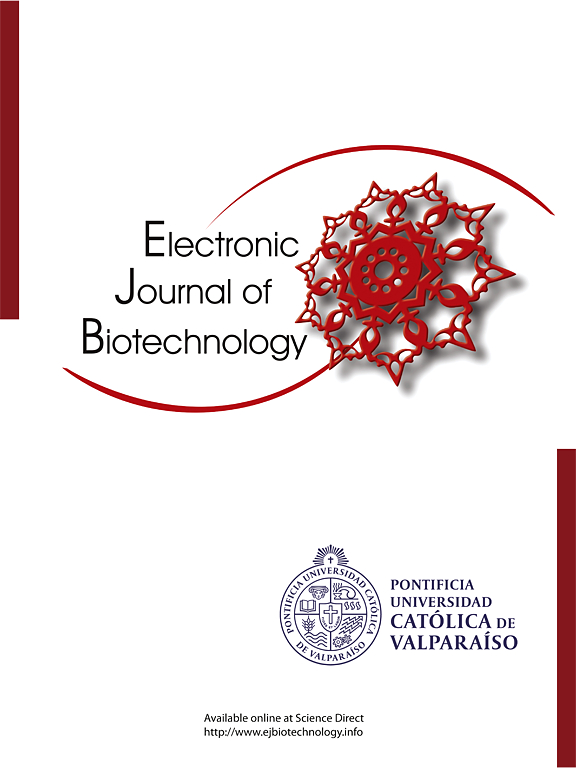Novel Erodium glaucophyllum (L.) Aiton growing in arid environment: Phytochemical characterization, antimicrobial, antioxidant, and anticancer potential
IF 2.5
4区 生物学
Q3 BIOTECHNOLOGY & APPLIED MICROBIOLOGY
引用次数: 0
Abstract
Background
The misuse of antimicrobial agents resulted in a global serious health concern, namely antimicrobial resistance. Also, traditional bioactive compounds are associated with undesirable adverse effects. This study aimed to first assess the phytochemical analyses and biological activities of Erodium glaucophyllum (L.) Aiton from the arid region.
Results
The gas chromatography-mass spectroscopy analysis of Erodium glaucophyllum leaves crude extract revealed the presence of 36 biologically vital compounds, with 8 main compounds being identified. Docosenamide, hexadecanoic acid, thiocarbamic acid, hentriacontane, β-sitosterol, quinoline, and oleic acid were among the most significant compounds. Docosenamide was the most prevalent compound, comprising 45.3%. The phytochemical analysis revealed the presence of a diverse array of chemical compounds, such as carbohydrates, polyphenols, flavonoids, and tannins. In moderate concentrations, saponins, glycosides, quinones, proteins, and amino acids were present. Additionally, alkaloids, steroids, diterpenes, and cardiac glycosides were identified in trace amounts. Also, chlorogenic acid was the dominant with 69.14% among other phenolic compounds. The antimicrobial results of the tested extract showed promising activity against Bacillus subtilis, Staphylococcus aureus, Salmonella typhimurium, and Pseudomonas aeruginosa, with minimum inhibitory concentration of 31.25, 15.62, 15.62, and 62.5 µg/ml, respectively. Furthermore, the extract demonstrated potent antioxidant activity, with an EC50 of 51.7 µg/ml, and anticancer activity against MCF-7 malignant cell line, with an IC50 of 58.4 µg/ml.
Conclusions
The tested crude extract of Erodium glaucophyllum leaves represents a potential source of bioactive compounds that possess antimicrobial, antioxidant, and anticancer properties.
How to cite: Hashem AH, Badr BM, Elkady FM, et al. Novel Erodium glaucophyllum (L.) Aiton growing in arid environment: Phytochemical characterization, antimicrobial, antioxidant, and anticancer potential. Electron J Biotechnol 2025;75. https://doi.org/10.1016/j.ejbt.2025.01.005.

新青花紫荆(L.)干旱环境下生长的艾草:植物化学特性、抗菌、抗氧化和抗癌潜力
抗菌药物的滥用导致了全球严重的健康问题,即抗菌药物耐药性。此外,传统的生物活性化合物与不良反应有关。本文首先对青花Erodium glaucophyllum (L.)的植物化学分析和生物活性进行了初步研究。来自干旱地区的艾顿。结果通过气相色谱-质谱联用分析,鉴定出36种生物活性化合物,鉴定出8种主要化合物。二十二酰胺、十六烷酸、硫代氨基甲酸、三康烷、β-谷甾醇、喹啉和油酸是最显著的化合物。Docosenamide是最常见的化合物,占45.3%。植物化学分析揭示了多种化合物的存在,如碳水化合物、多酚、类黄酮和单宁。在中等浓度,皂苷,糖苷,醌,蛋白质和氨基酸存在。此外,生物碱、类固醇、二萜和心脏苷被鉴定出微量。绿原酸在其他酚类化合物中占主导地位,占69.14%。对枯草芽孢杆菌、金黄色葡萄球菌、鼠伤寒沙门菌和铜绿假单胞菌的抑菌活性较好,最低抑菌浓度分别为31.25、15.62、15.62和62.5µg/ml。此外,提取物显示出强大的抗氧化活性,其EC50为51.7µg/ml,对MCF-7恶性细胞系的抗癌活性,其IC50为58.4µg/ml。结论青花Erodium glaucophyllum叶片粗提物具有抗菌、抗氧化和抗癌活性。如何引用:Hashem AH, Badr BM, Elkady FM等。新青花紫荆(L.)干旱环境下生长的艾草:植物化学特性、抗菌、抗氧化和抗癌潜力。中国生物医学工程学报(英文版);2009;16。https://doi.org/10.1016/j.ejbt.2025.01.005。
本文章由计算机程序翻译,如有差异,请以英文原文为准。
求助全文
约1分钟内获得全文
求助全文
来源期刊

Electronic Journal of Biotechnology
工程技术-生物工程与应用微生物
CiteScore
5.60
自引率
0.00%
发文量
50
审稿时长
2 months
期刊介绍:
Electronic Journal of Biotechnology is an international scientific electronic journal, which publishes papers from all areas related to Biotechnology. It covers from molecular biology and the chemistry of biological processes to aquatic and earth environmental aspects, computational applications, policy and ethical issues directly related to Biotechnology.
The journal provides an effective way to publish research and review articles and short communications, video material, animation sequences and 3D are also accepted to support and enhance articles. The articles will be examined by a scientific committee and anonymous evaluators and published every two months in HTML and PDF formats (January 15th , March 15th, May 15th, July 15th, September 15th, November 15th).
The following areas are covered in the Journal:
• Animal Biotechnology
• Biofilms
• Bioinformatics
• Biomedicine
• Biopolicies of International Cooperation
• Biosafety
• Biotechnology Industry
• Biotechnology of Human Disorders
• Chemical Engineering
• Environmental Biotechnology
• Food Biotechnology
• Marine Biotechnology
• Microbial Biotechnology
• Molecular Biology and Genetics
•Nanobiotechnology
• Omics
• Plant Biotechnology
• Process Biotechnology
• Process Chemistry and Technology
• Tissue Engineering
 求助内容:
求助内容: 应助结果提醒方式:
应助结果提醒方式:


